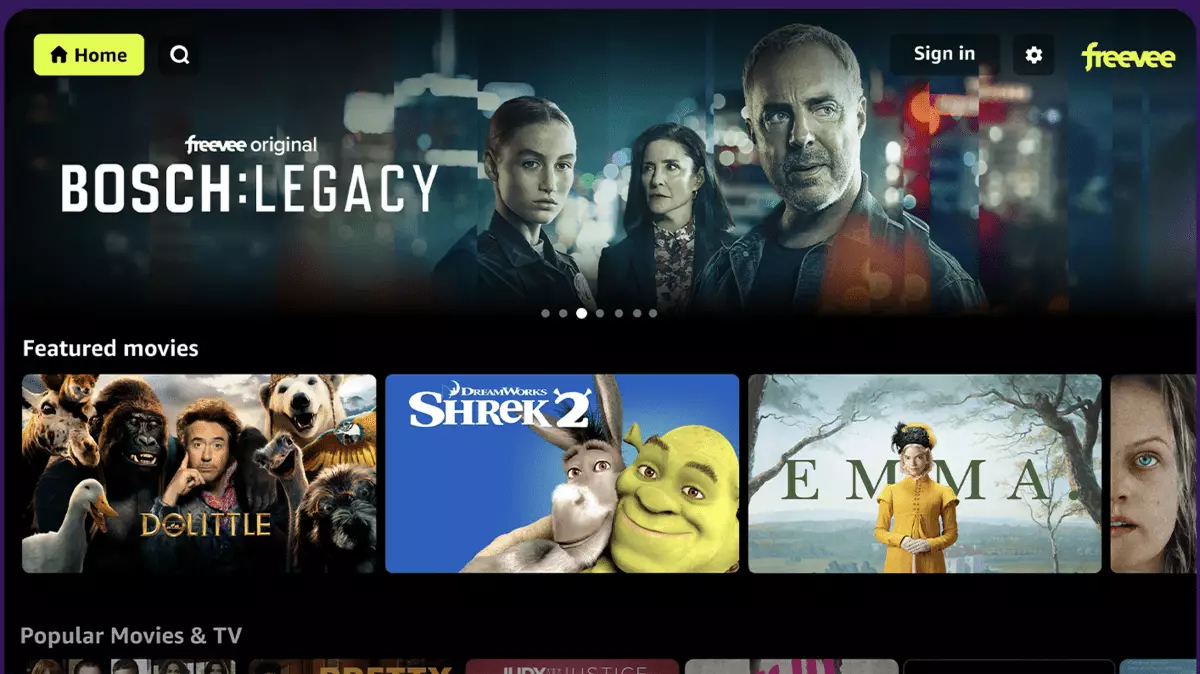Amazon’s bold decision to shut down its standalone Freevee app marks a significant turning point in the evolution of digital entertainment. Introduced in 2019 and rebranded as Freevee in 2022, this ad-supported platform once promised a diverse library of movies, TV shows, and live content without a subscription. However, as Amazon consolidates its streaming offerings, the once-promising free service is scheduled to cease operations independently by August 2025. This move underscores a much broader industry trend: the push to streamline user experience by reducing fragmentation and focusing on a single, dominant platform—Prime Video.
From a strategic perspective, Amazon’s choice appears calculated. By integrating Freevee content into Prime Video, the company aims to bolster its primary service and make it more competitive in an increasingly crowded streaming market. It’s no secret that consumers gravitate toward convenience; having to navigate multiple apps and subscriptions only discourages engagement. Therefore, Amazon’s tactic to channel all content into a unified platform is not just about simplifying its brand architecture but about capturing more viewer time and loyalty within its ecosystem.
This transition could be viewed as a double-edged sword. On one hand, it risks alienating casual viewers who enjoyed the free, ad-supported model. On the other hand, consolidating content enhances Prime Video’s value, potentially attracting new subscribers who are tempted by a larger, more cohesive library. Crucially, Amazon assures that free content remains accessible, though now it will be nestled within Prime Video, which some might see as a way of pressuring non-Prime users to subscribe. This subtly shifts the value proposition, blending free access with the benefits of a paid membership.
The Implications for Consumers and the Streaming Industry
This strategic move highlights Amazon’s broader ambition to dominate streaming by offering a unified experience rather than operating multiple stand-alone apps. For consumers, it raises a plethora of questions: Will this transition harm access, or will it unlock a more streamlined viewing experience? The reality appears mixed. The advantages of centralization include easier navigation, a more extensive library, and potential cost savings—since users won’t need multiple subscriptions. Yet, there is a concern that this consolidation could subtly coerce free viewers into subscribing to Prime, thus narrowing the variety of free content available outside the ecosystem.
Furthermore, Amazon’s decision is also a reflection of a broader industry trend. Nielsen reports reveal streaming services have overtaken cable and network television, driven by a rise in free ad-supported models. Amazon’s move to fold Freevee into Prime Video exemplifies how platforms are adjusting their strategies to capitalize on the shifting consumer preferences—favoring a “single-stop-shop” approach that combines paid and free content under one roof. It’s a pragmatic, if somewhat aggressive, step toward capturing a larger share of the increasingly lucrative streaming pie.
Yet, skeptics might argue that this focus on consolidation diminishes diversity in the streaming market. As dominant players like Amazon tighten their grip, smaller or niche services risk being pushed aside, reducing overall consumer choice. The core question remains whether this move signals a sustainable strategy for Amazon or a short-term attempt to maximize immediate profits at the expense of broader innovation and competition.
A New Chapter for Free Content in a Dominant Ecosystem
Amazon’s shutdown of Freevee in favor of a unified Prime Video experience marks a larger narrative about the future of streamed entertainment. It’s a recognition that consumers increasingly prefer not to juggle multiple platforms but rather seek all their content in one accessible space. While this may seem like an innovation to some, it’s more a reflection of market pressures and an effort to stay ahead in a fierce competition.
However, the transparency around the process and Amazon’s promise that free content will still be available through Prime Video indicates a nuanced balancing act. It’s less about abandoning free content altogether and more about integrating it into a pay-or-free ecosystem that benefits Amazon’s broader business goals. Whether this approach fosters greater innovation and diversity or stifles it depends largely on how well Amazon manages the user experience and maintains affordable access to quality content outside of its core paid services.
Amazon’s decision to phase out Freevee acts as both a warning and an opportunity. It’s a reminder that the future of streaming is increasingly centralized, with tech giants striving to control the entire viewer journey. Only time will tell how this shift will impact viewer choice, industry competition, and the overall creative landscape.

